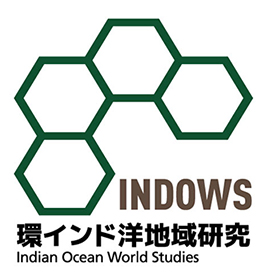“Indian Ocean World Studies Project: INDOWS”
Indian Ocean World Studies (INDOWS) project is one of the regional studies projects implemented under “Global Area Studies Program,” launched by National Institute for the Humanities (NIHU) [in Japanese] .
This project focuses on the Indian Ocean as well as its adjoining land areas, and aims to elucidate the dynamism of how the mobility and the expansion of people, materials, information, money, culture and faith have contributed to the generation, development, accumulation or extinction of various relations within and outside of this world. Another objective is to open up new perspectives in regional studies, by establishing a regional setting as Indian Ocean Word as well as an analytical method which contributes to its study. Specifically, the following four themes have been set for the project: 1) linkage and continuity of movement; 2) hybridity and creativity in literature and ideas; 3) development, medicine, and environment; and 4) peaceful coexistence. The four project centers carry out its own research focusing on one of the themes. We are also going to organize a consortium to unite research institutes and organizations with common interest in Japan and overseas, leading the international networking in this research field.
![[img]](../b-files/about_img_minpaku.jpg)
- At National Museum of Ethnology (core-center)
- “Linkage and Continuity of Movement”
![[img]](../b-files/about_img_osaka.jpg)
- At Osaka University
- “Hybridity and Creativity in Literature and Ideas”
![[img]](../b-files/about_img_tokyo.jpg)
- At University of Tokyo
- “Development, Medicine, and Environment”
![[img]](../b-files/about_img_kyoto.jpg)
- At Kyoto University
- “Peaceful Coexistence”

